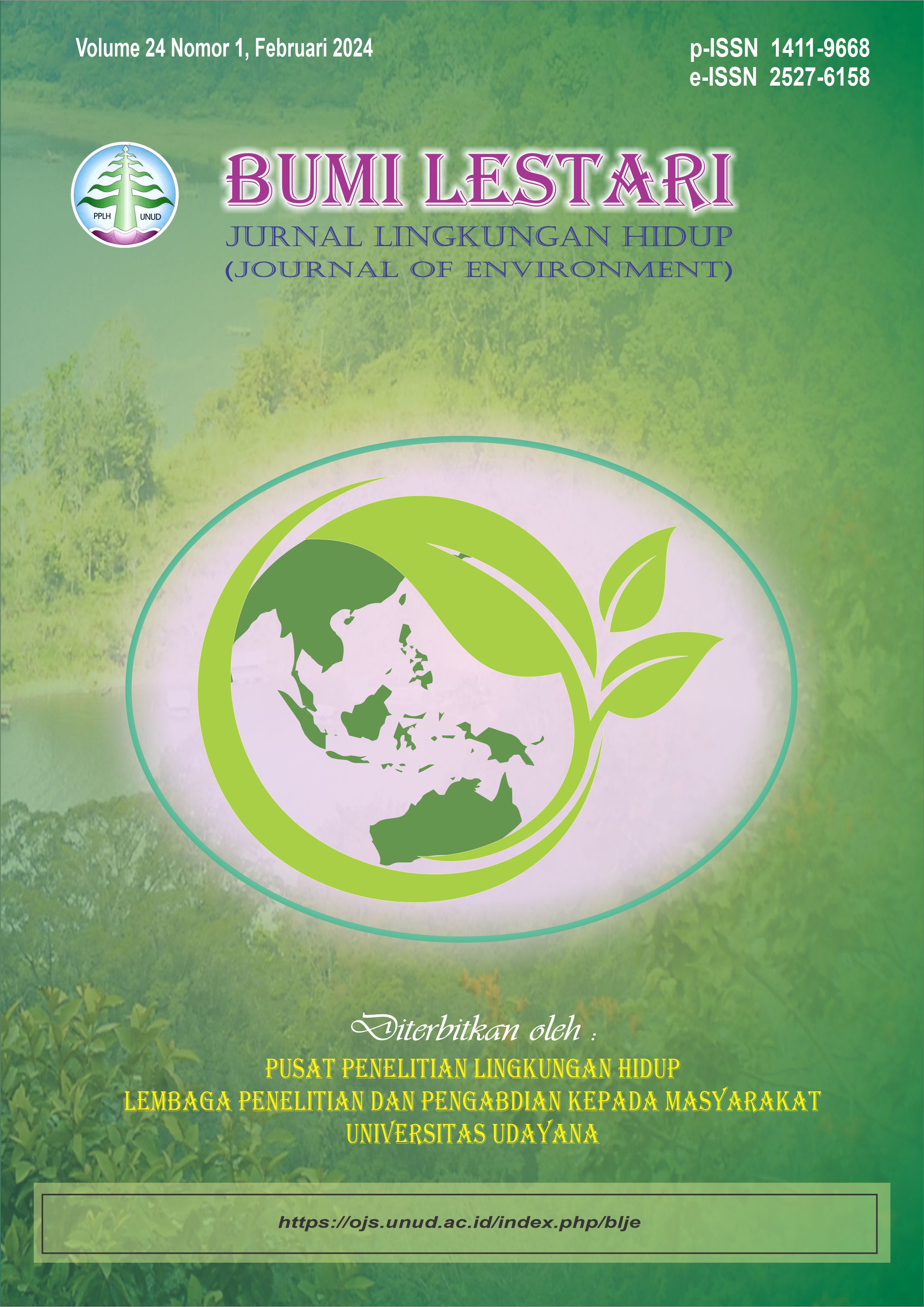Korelasi Kelimpahan Megabentos dengan Persentase Tutupan Terumbu Karang di Perairan Amed, Kabupaten Karangasem, Bali
Abstract
The existence of each megabenthos is related to the condition of coral reefs which act as habitats for various types of megabenthos species. Benthos are commonly takes advantage of the ecosytem of coral reef as a habitat to live and shelter in the coral niches from natural predators. This study aimed to determined the abundance of megabenthos and the percentage of coral reef cover, as well as the correlation between the abundance of megabenthos and the percentage of live coral cover in Amed Waters. Megabenthos data collection was carried out using the Benthos Belt Transect (BBT) method. Point Intercept Transect (PIT) was used to examined the coral percentage cover. Correlation of Pearson was used to analyzed the correlation between abundance of megabenthos and coral percentage cover. A total of 473 individuals with a total abundance of 0.26 ind/m2 were found in this study. Interestingly, there were no Acanthaster planci individuals found during the data collection. The condition of coral reefs was dominated by Dead Coral Algae (DCA), while the percentage value of live coral cover in Amed Waters were 19% to 35% in the damaged to moderate category, respectively. Pearson correlation showed a value of (r) 0.067 with a very weak positive category which indicates that there is a positive relationship between the two variables which indicating that the correlation of megabenthos abundance has no significant relationship with the percentage of live coral cover.
Keywords: megabenthos; Amed; Pearson; dead coral algae
Downloads
Authors who publish with this journal agree to the following terms:
- All articles published by Bumi Lestari Journal of Environment and Environmental Reseach Center Udayana University are made available under an open access license worldwide immediately. This means everyone has free and unlimited access to the full-text of all articles published in Bumi Lestari Journal of Environment, and everyone is free to re-use the published material given proper accreditation/citation of the original publication. Open access publication is supported by authors' institutes or research funding agency by payment of a comparatively article processing charge for accepted articles (See Author Fees). Bumi Lestari Journal of Environment and Environmental Reseach Center Udayana University publish articles under the Creative Commons Attribution License.
- Authors are able to enter into separate, additional contractual arrangements for the non-exclusive distribution of the journal's published version of the work (e.g., post it to an institutional repository or publish it in a book), with an acknowledgement of its initial publication in this journal.
- Authors are permitted and encouraged to post their work online (e.g., in institutional repositories or on their website) prior to and during the submission process, as it can lead to productive exchanges, as well as earlier and greater citation of published work (See The Effect of Open Access).





